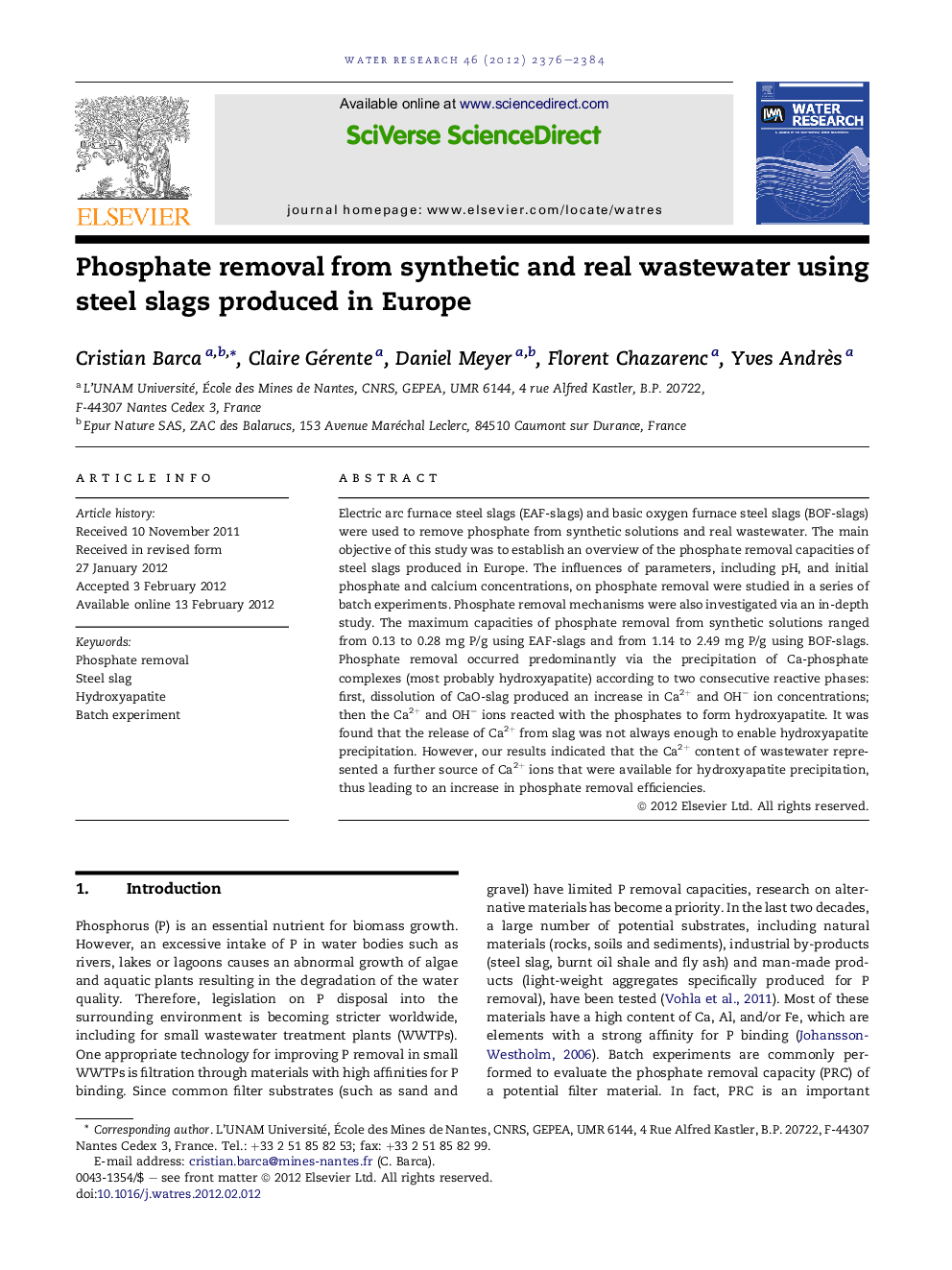| کد مقاله | کد نشریه | سال انتشار | مقاله انگلیسی | نسخه تمام متن |
|---|---|---|---|---|
| 4482940 | 1316873 | 2012 | 9 صفحه PDF | دانلود رایگان |

Electric arc furnace steel slags (EAF-slags) and basic oxygen furnace steel slags (BOF-slags) were used to remove phosphate from synthetic solutions and real wastewater. The main objective of this study was to establish an overview of the phosphate removal capacities of steel slags produced in Europe. The influences of parameters, including pH, and initial phosphate and calcium concentrations, on phosphate removal were studied in a series of batch experiments. Phosphate removal mechanisms were also investigated via an in-depth study. The maximum capacities of phosphate removal from synthetic solutions ranged from 0.13 to 0.28 mg P/g using EAF-slags and from 1.14 to 2.49 mg P/g using BOF-slags. Phosphate removal occurred predominantly via the precipitation of Ca-phosphate complexes (most probably hydroxyapatite) according to two consecutive reactive phases: first, dissolution of CaO-slag produced an increase in Ca2+ and OH− ion concentrations; then the Ca2+ and OH− ions reacted with the phosphates to form hydroxyapatite. It was found that the release of Ca2+ from slag was not always enough to enable hydroxyapatite precipitation. However, our results indicated that the Ca2+ content of wastewater represented a further source of Ca2+ ions that were available for hydroxyapatite precipitation, thus leading to an increase in phosphate removal efficiencies.
Figure optionsDownload high-quality image (156 K)Download as PowerPoint slideHighlights
► Steel slags were used to remove phosphate from aqueous solutions.
► Mechanisms and capacities of phosphate removal were studied via batch experiments.
► Phosphate removal occurred predominantly via precipitation of calcium phosphate.
► CaO-slag dissolution has provided Ca2+ ions for calcium phosphate precipitation.
Journal: Water Research - Volume 46, Issue 7, 1 May 2012, Pages 2376–2384